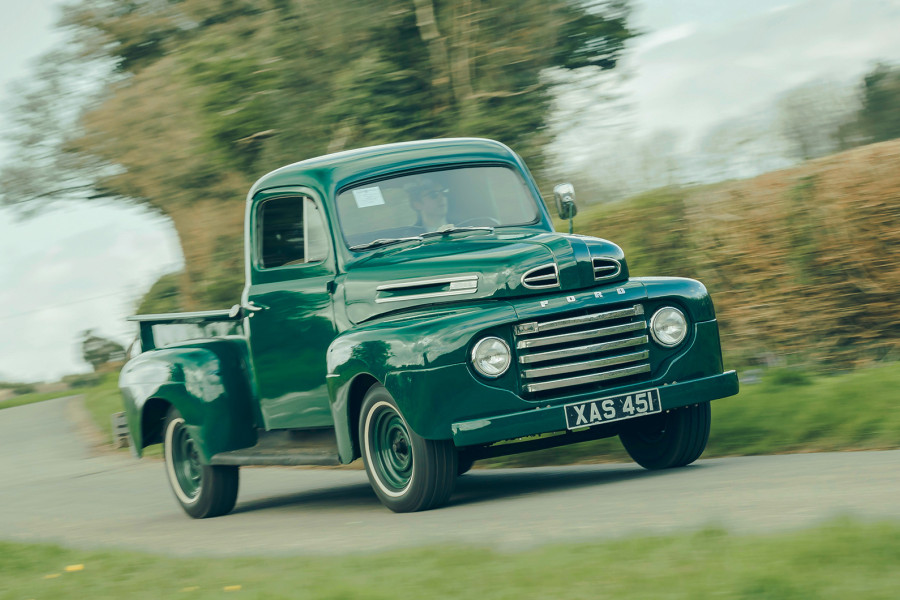Serendipity struck again: calling at the nearest industrial spring maker in Redditch, Neil stumbled upon the company that built the originals.
Now called Middleton Springs, Terry Springs had a successful line of domestic spring clips in the ’70s, primarily used for hanging brooms in cupboards.
“They had all the original drawings,” says Neil. “They were made in that factory, on a machine that’s still there.
“In fact, the woman who’s running the machine today is probably the same one who made them in 1971.”
Heavy-duty springs control the sweet-handling Ford Escort’s extra weight
He placed the minimum order – 50 – and had the original-length springs remade.
Despite Neil’s obsession, there are three things he couldn’t bring himself to recreate exactly.
The most visible one is the paint around the engine bay – today painted white, like virtually every other Ford works rally car.
“It was originally finished in silver Hammerite. It’s horrible stuff, it never fully sets. The tiniest bit of solvent on it, petrol or anything, and it starts to drip,” he explains.
“Peculiarly, as far as I’m aware, it was only the cars on the 1971 rally that had it.”
The Ford’s Willans buckles were found in old stock
Similar logic led to him refusing to add the sheet steel riveted to the magnesium sump-guard for extra protection: “It was unpainted, scrapes on everything and rusts away, so I decided to delete that.”
The safety of both the car and its occupants forced the final change: to the oil lines, which originally ran through multiple metal-to-rubber junctions, and even through the passenger-seat rail.
Neil simply fitted two single-piece rubber lines: one feed, one return.
“If any one of those individual junctions had gone, you would seriously damage your co-driver, write off the interior and write off the engine. It wasn’t worth the risk.”
The Ford Escort Twin Cam’s custom panel includes switches for the spotlamps
After 16 years, Neil drove the car’s first few metres on to and back off a trailer to get to the 2021 Classic Motor Show at the NEC. “I wouldn’t take anybody in it as a passenger for a couple of months until I’d actually figured out how to drive it,” he says. “It was all quite terrifying at first.”
His primary issue was one the 5ft 9in Mäkinen was unlikely to have noticed.
For Boreham to make the special ZF five-speed transmission tunnel fit, the LHD bodyshell required improvisation.
“They literally hit it with a big hammer to bend it out,” says Neil, “and it made the pedalbox really tight. I couldn’t drive it in a pair of ordinary shoes.”
“The arch extensions are handmade aluminium, the bonnet and the boot are glassfibre. It’s even got magnesium wheels, but I think it is 150kg heavier than standard”
Escort guru Dave spaced out the pedals after nine months on the road, while the rally-spec spark plugs and carburettor jets were swapped for more road-friendly alternatives, too.
Today, it is much more drivable.
The clutch is not too heavy or sudden, while the dog-leg gearshift is easy to navigate.
Neil is keen to keep the revs under 7000 while the car is warming up, which is easier said than done thanks to the car’s extremely short gearing in its lower ratios and the Twin Cam’s peaky tuning.
The Ford Escort Twin Cam’s airline livery was discovered on a model
Below 4000rpm the car bogs and struggles, and its redline is up at 8500rpm.
Unlike in most works Escorts, however, fifth is an overdrive designed for the long distances of the Safari Rally.
Now much more confident in the car, Neil regularly takes it to local shows and for drives on his favourite roads.
The bark of the exhaust is thrilling, while the direct steering makes cornering satisfying – though you do need to remember the limited grip those knobbly tyres possess on Tarmac.
The Ford’s rotating headlamp wipers were sourced from a scrapyard in Finland
The biggest surprise is how well the car rides, which Neil puts down to its heavy-duty springs and considerable weight.
“They tried to make it light. The arch extensions are handmade aluminium, the bonnet and the boot are glassfibre. There are even magnesium wheels,” he says.
“But it’s got two spare wheels, an enormous fuel tank and big metal bumpers. I think it is 150kg heavier than standard.”
Finally content with the condition of the Safari Rally Twin Cam, Neil is now restoring his original 1300 Sport to the clubman racer specification that led him to fall in love with the model in the first place.
It’ll be a thorough rebuild, no doubt, but a relief after the exacting task of creating one of the most authentic works Mk1 Ford Escorts remaining.
Images: Max Edleston
Thanks to: Neil Robinson, Dave Watkins, Denis Chick and Owen Henderson-Hamilton
Enjoy more of the world’s best classic car content every month when you subscribe to C&SC – get our latest deals here
READ MORE
Ford Taunus 20M RS: the cosmopolitan Rallye Sport
They’re coming home: the World Cup Rally’s 50th anniversary
Taking on the Silver Fern Rally in a classic Toyota
Charlie Calderwood
Charlie Calderwood is Classic & Sports Car’s Features Editor




























